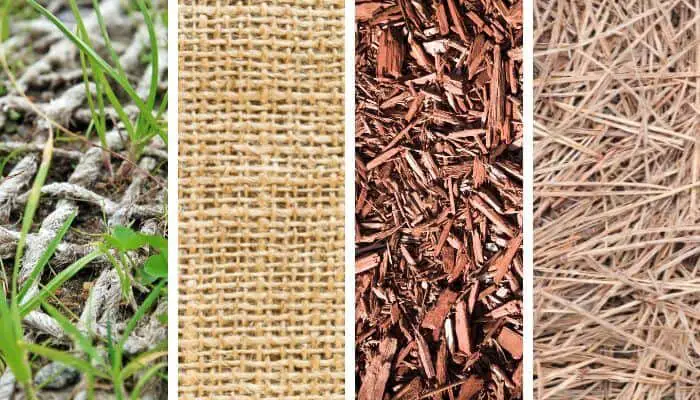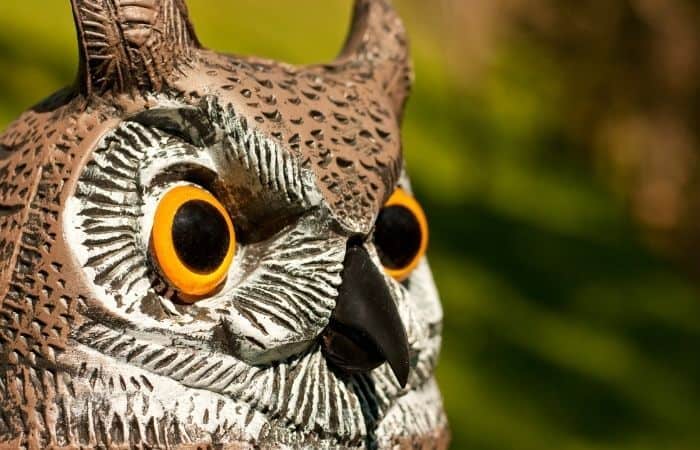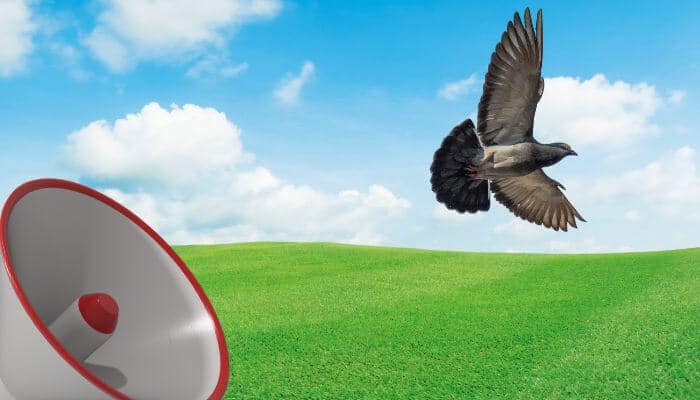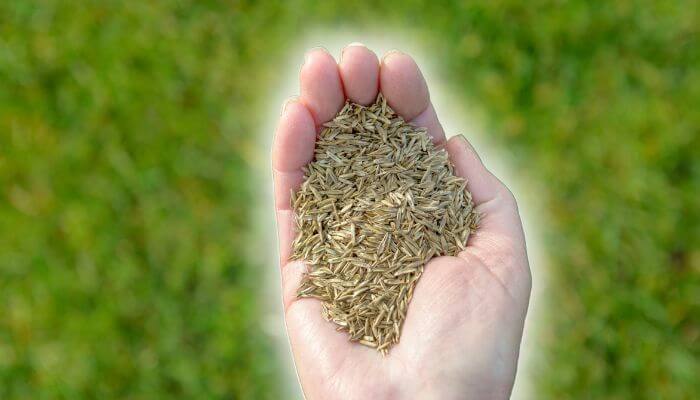If you’re trying to re-seed or grow a lawn from scratch, pigeons eating up all the seeds can seriously hamper the progress your lawn makes.
Thankfully there are several simple solutions that will improve your lawn’s chances of success by minimizing the amount of seed that pigeons (and other birds) can eat.
The main ways to stop pigeons from eating grass seed are:
- Cover up the seeded area
- Physical and visual deterrents
- Noise deterrents
- Provide alternative food
- Use quick-start grass seed
- Use bird-repellent grass seed
- Plant extra seeds
Why the Bother?
If you are particularly proud of your garden and like to preserve and maintain it, then it is very likely that from time to time you put in some hard graft.

You might reseed or sow your lawn with a pile of high-quality grass seed in anticipation of a beautiful green carpet across the year.
You might see the potential for the perfect lawn, but on those seeding days, all a pigeon will see is a huge opportunity to dive in and treat themselves to a real feast!
Pigeons do not eat grass but they do love a good juicy seed.
Let’s not forget too, if you are seeding an area in the hope of a new lawn, the newly raked patch is going to be tempting for pigeons (and other birds) who enjoy a nice dust bath.
Here are some top tips for how to stop pigeons from having a field day (pun intended) with your freshly sown grass seed!
1. Place Covers Over The Seeded Areas
Types of covers are:
- Netting
- Burlap
- Soil
- Mulch
- Straw
Covers tend to be the most effective deterrent although it gets trickier if you have a large area to cover.
Ensure the material you choose enables sufficient light to get through to allow the seeds to germinate and grow.

There are various types of covers including dedicated bird netting, fine grass seed netting, floating seed covers and burlap sheets.
Other forms of coverage you may not immediately think of are soil, straw and mulch.
Most instructions say to scatter the seeds directly onto a raked surface and leave it bare but the seeds should happily grow if you apply a covering of soil, straw or mulch to a depth of 1/8 of an inch.
Fine nets, soil, mulch and burlap sheets will also prevent winds from blowing the seeds away.
2. Use Visual Deterrents
There is a reason that scarecrows have worked so well as a deterrent for centuries so there’s nothing silly about fixing one up in your garden.
And it isn’t just scarecrows that will work as visual deterrents.

You can buy models of common pigeon predators to place around your garden. They range from basic plastic decoys to highly sophisticated models that move. You can even use rubber snakes!
Pigeons have excellent eyesight and will spot models of hawks and owls in your garden and decide to forage elsewhere.
Browse for pigeon deterrents online and you’ll find a whole range of decoy-type objects including terror eye balloons and devices that spray jets of water when a bird sets off a motion sensor.
Decoys will work better as a deterrent if you move them around the garden, changing their position every so often.
Alternatively, you can also play around with light deterrents by placing reflective tape on fences or trees or even hanging up some old compact discs. These erratic glimpses of light will disturb the pigeons and put them off trying to get down on your lawn.
3. Use Noise Deterrents
As well as visual deterrents, pigeons can also be easily put off by unpleasant noises.
You can buy electronic bird noise scarers which emit an ultrasonic sound that may be audible or inaudible to the human ear depending on the design you opt for.
Some just look like little electronic boxes, others may be solar-powered and others are even in the form of predators like owls.

You can also go low-tech. String tin cans so they clang together or hang wind chimes where they will catch the breeze and sound their noise close to your seeded area.
Something to keep in mind when considering a noise deterrent is how your neighbors might feel about clanging tin cans or constant wind chimes.
If you have the space to be able to do this undisturbed then it can be a good option, but if you live in close proximity to others then it could be more trouble than it is worth!
4. Provide Alternative Food Options
It seems too simple to be effective, but plenty of gardeners have found success in preventing birds from eating their grass seed simply by providing an alternative food option nearby.
Pigeons aren’t daft. If they see something more appetizing than grass seed – and there are many more enjoyable foods – they will go for the tastier option.

It is also easier to get seeds from a feeder than from off the ground.
All you need to do is strategically place a few bird feeders around your garden and fill them with mixes that are much more enticing than plain old grass seed.
You can think of this as a bribe to keep them away from your vulnerable growing lawn! Remember too, this will attract other birds to your garden.
5. Use Quick Start Seeds
To give your lawn the best chance of thriving before the pigeons descend is to use grass seed that is specifically engineered to be fast growing.

These seeds have a nutrient coating that speeds up germination to give you a fully grown lawn in a much shorter space of time.
This will still take up to 4 days in ideal conditions, but what it gives you is the chance to only have to use your various deterrents for a few days rather than weeks!
6. Use Bird Repellent Grass Seed
You can also purchase grass seed that has been specifically treated to repel birds.
A thin coating is applied to the seeds that makes them unpalatable to the pigeons.
This will generally be successful, but as we are sure you can imagine, a hungry pigeon is probably going to happily munch through something that doesn’t taste the best if they are hungry.
7. Sow Far More Seeds Than You Need
There’s no scientific approach to this.
What is inevitable though is that no matter how proactive you are in trying to protect your grass seeds, you will lose some because they will get eaten by birds, be blown away by the wind or even rot before they germinate.

The seed packet will provide instructions on how much seed you should use for a given area. To improve your chances of a beautiful new lawn, simply use more than is recommended.
Even if you love pigeons and other birds to visit your garden, it is frustrating when you have to battle to grow a new lawn.
You may find you need one or more of the prevention methods above to achieve just that.
